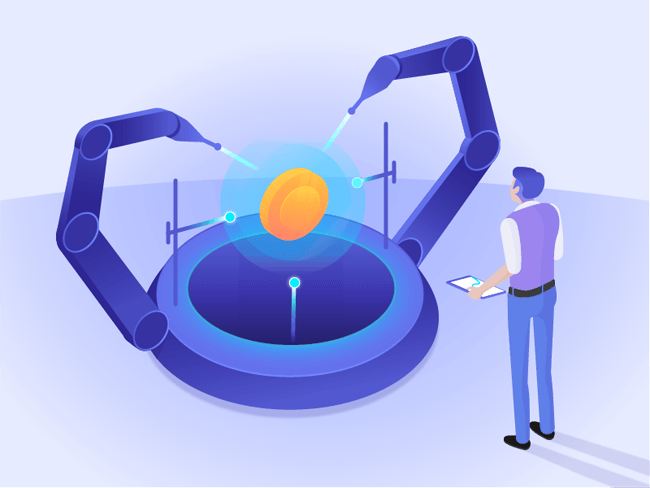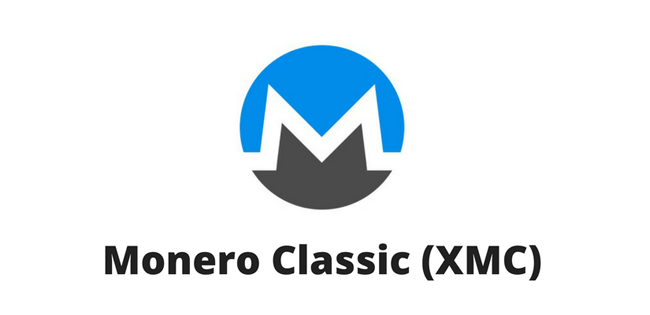We have all seen it happen with Bitcoin.
Bitcoin Cash, Bitcoin Gold, Bitcoin Atom, Bitcoin Dark… the list goes on and on when it comes to altcoins that are just another name for the original Bitcoin with a few new features added to the offering.
While Bitcoin and almost everyone in the cryptocurrency industry has grown to be accustomed of such developments to the point where they are not considered to be lurid anymore, other coins have not been as experienced in this forking front.
That is why when news broke of not one or two, but three new coins originating from Monero all at once, it did send a sense of wonder through the Monero and general cryptocurrency community.
What are the Names of These Forked Coins?
The coins are named Monero 0 (XMZ), Monero Classic (XMC), and then another one by the same name of Monero Classic (XMC). If the iteration seems somewhat confusing to you, it is certainly not your fault.
That is just how the coins have been named.
The development of these new coins rose from Monero’s most recent hard fork, after which, certain parts of the existing Monero community decided not to move with the updated version of the blockchain but stay back and operate the same way as the old network had been functioning.
This is akin to how Ethereum Classic came into being, when the Ethereum as we know it, hard forked and moved with an important update to restore stolen funds to the DAO ICO.
The ones who were against the move decided to stay back on the old network and started operating as Ethereum Classic.
In Monero’s case, the hard fork took place to implement a few major updates to the network.
Details on the Monero Hard Fork
As stated above, in Monero’s case, the hard fork took place to implement a few major updates to the network.
On April 6, 2018, the network protocol was upgraded to version 12, which paved the way to several significant implementations for Monero’s future.
Monero, which itself was forked from Bytecoin, is considered as one of the best – and arguably the best – cryptocurrency network when it comes to performing untraceable and confidential transactions.
Monero is not a novice when it comes to implementing hard forks of its own either.
In fact, the network is used to executing hard forks around every 6 months in order to keep itself updated with the latest trends and requirements of the industry. The hard forks also go to ensuring that Monero can provide the best possible services to its target users, to whom, privacy and decentralization remain to be the most pressing concerns.
That is why, when Monero announced this particular hard fork to version 12, in order to employ its next set of updates, no one had expected it to be creating fundamental issues.
Apparently, these fundamental issues were quite severe and this caused these new Monero coins to come out of the hard fork event.
Before we speak of the technical updates, let us go through how Monero works to maintain the private transactions on its network, so you may understand exactly how the updates in version 12 are going to affect the network.
What is Monero and How Does it Work?
Monero is built upon a decentralized blockchain protocol called Cryptonote, which is focused on privacy and thus enables the implementation of several confidentiality features.
Since its inception in 2014, Monero has added several new features to its blockchain through multiple upgrades and hard forks.
Three of its core features remain to be Ring Signatures, Stealth Addresses, and Ring Confidential Transactions (RingCT).
The Ring Signatures employ a functionality which gets a single transaction digitally signed by multiple parties before it is posted on the network.
All but one of the keys used in this process is the actual information pertaining to the transaction, and this method of obfuscation ensures that the sender information remains private and untraceable.
The Stealth Addresses make use of one-time addresses that are randomly generated for each transaction. These addresses cannot be traced and linked to the owners. By implementing this feature, Monero ensures that it is maintaining the privacy of payment recipients.
The RingCT takes the aforementioned precautions one step further and leverages unique features to hide the details of the transacted amount and make it untraceable to the performed transactions.
By doing this, the network makes sure that the amount shared between users is not divulged to a third party.
Through the use of these three core features, Monero takes care of all important aspects that could make a transaction traceable: sender, recipient and amount information.
Since none of these details are ever revealed to anyone but the transacting parties, the transactions remain private.
To make sure that the details are never compromised, Monero makes all transactions on its blockchain to be marked private by default.
However, parts of the information can be revealed if the transacting parties choose to do so.
Furthermore, Monero uses proof-of-work (PoW) as its consensus algorithm. The PoW used by Monero is based on Cryptonote and uses the CryptoNight hashing algorithm.
This makes it easier to run Monero mining operations on machines that are not that technically powerful or use special equipment.
The Updates Implemented In Version 12 and What Led to the Hard Fork
Now that you know about the most important functions of the Monero network, let’s look at the updates that it planned to implement in version 12 of its protocol.
The latest slew of updates that Monero intended to introduce pertained to its normal set of features, including an increase in the ring-size of transactions and support for popular hardware wallet Ledger Nano S.
However, the hard fork update that led to the coins was not about one of those features.
The decision, instead, centered around Monero’s decision to upgrade its CryptoNight hashing algorithm for another specific reason. What was the reason?
Fairness.
Updating the system would allow for fairness by eradicating the use of application-specific integrated circuit (ASIC) chips for Monero mining.
Let me elaborate.
ASIC chips are specially created computer processing chips that in terms of cryptocurrency mining, aide in the mining operations by making the processes faster.
However, the downside of ASIC chips gets to be that miners using the expensive ASIC chips have a certain and unfair advantage over those miners who are using computers with normal GPUs. Furthermore, these chips also use more resources and are mostly used by professional organizations that perform cryptocurrency mining to generate revenue – these operations are also called mining pools.
Despite this, a billion dollar industry has risen out of manufacturing and using these ASIC chips for cryptocurrency mining. One of the giants in the industry, called Bitmain, was reported to have generated $4 billion in operating profits in 2017.
In fact, it was just in March 2018 when Bitmain released Antminer X3, a special ASIC miner that specializes in CrypoNight mining. In other words, it was a product specifically designed for Monero, and Monero’s upgrades from version 12 rendered it obsolete not even a month into its release.
This particular issue was the reason for the passionate debate behind whether or not Monero should be allowed to essentially clampdown on the cryptocurrency mining operations.
Also, how it stops “progression” in terms of the development of sub-industries that operate within the cryptocurrency industry itself.
Details on the New Monero Coins
Image credits:
The 3 coins that were mentioned at the start of this post, Monero 0 and the two Monero Classics (both of them having their ticker as XMC), so far remain identical to version 11 of Monero.
They still use the aforementioned features including ring signatures, stealth addresses, and RingCT.
The coins also currently implement the complete functionalities of the Monero network as we knew it before the hard fork and upgrades for version 12 were deployed.
However, none of these new coins provide additional features and details on any future functionalities so far. All they remain at this point are identical versions of each other and Monero’s version 11, which creates more confusion than anything regarding their value proposition at this point.
Apart from being identical in features, there is another recurrent theme through all of these new coins.
What is their claim?
Being the “original” Monero that should not have taken the steps to hard fork so frequently, and that should not have curbed the use of ASIC equipment in its mining operations by fiddling with the PoW consensus.
Monero Classic’s Statement
For instance, the statement from one of the Monero Classics reads that developers should not change the PoW algorithm in any case, because it leads to centralization.
“… with mining there is always competition.” The statement reads. “That’s how the consensus mechanism is supposed to work. There is economic incentive to remain honest and follow the most profitable strategy.”
The Stance from the other Monero-Classic
The other Monero Classic (let’s call it Monero-Classic after the website) expresses similar views through its founder called “PZ”, whose self-introductions includes being an early Bitcoin evangelist.
“We considered about whether to change the algorithm to be against specialized ASIC mining machines or not. However, after prudent and serious discussion, we believe that for any kind of valuable algorithm, the emergence of mining machine is only a matter of time.” The statement on the website reads.
The site then continues to mention that changing PoW that stops mining equipment companies from manufacturing and benefiting from ASIC chips is unfair to the ecosystem.
Monero0 Claims to be the “Original” Monero
Whereas, Monero0 takes a sterner approach and mentions that Monero’s decisions to continuously hard fork do not present a strategy that could be termed as “sane” at any rate, and changing the PoW takes away from the model of a decentralized consensus.
“The so-called “network upgrades” that are centrally mandated by the Monero Project are a trojan horse designed to compromise the effectiveness of Proof of Work in the Monero network.
Monero0 is not a fork, it is the original Monero.” Monero0 eloquently shares its two cents on the situation.
Where Does It Leave Monero
Despite these new coins that remained on the old version of the blockchain, Monero soldiered on with its plans to implement all of the planned updates in version 12.
It successfully deployed its hard fork on April 6, as it had originally planned.
With it, version 12 of Monero went live along with the updates pertaining to the hashing algorithm.
While these new coins have been debating against Monero’s actions to alter the PoW hash, the community that moved to version 12 after the hard fork states that the network made a good decision by making its mining operations a fairground for large and small miners alike.
According to people who support Monero’s decision against ASICs, the move would actually keep the blockchain on the path to decentralization, since ASIC mining pools run by organizations such as Bitmain would no longer be able to take a larger portion of the mining operations.
Monero had actually specifically addressed this in February 2018.
“Mining, in general, is also prone to the rich-get-richer effect, which ultimately leads to centralization. For example, a large miner may have significant economies of scale which allows him to grow his share of the hashrate.” The network had stated in a blog post.
It did not leave its stance to be unclear either.
“In sum, we strongly believe that it’s beneficial to preserve our ASIC resistance.” The statement read.
By sticking to its policies and taking a stance against ASIC mining operations, Monero has set a precedent for other blockchain networks, such as Bitcoin, that have largely contributed to the ascent of ASIC mining manufacturing and the subsequent mining pools that are controlled by large corporations.
The Monero team also denounced the existing hard forks through a tweet, stating that no one should support these new coins along with another fork that is going to happen on April 30, by the name of MoneroV.
Unlike the aforementioned coins, MoneroV does promise updates to the existing functionalities of Monero and states that it will work to improve the scalability on the Monero blockchain as well as its existing PoW (unlike the other coins that do not want to modify the PoW further).
This, by some, has been regarded as an unnecessary requirement, since supporters of the Monero community believe that the network has already had any potential scalability issues under control.
When it comes to Monero’s value, it has faced fluctuation in the past couple of weeks, but propagators believe that it is due to the after-effects of the hard fork upgrade and that the coin will stabilize in value soon.
Monero is trading at $185 at press time.




